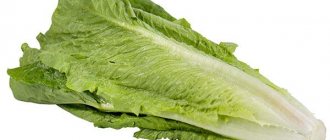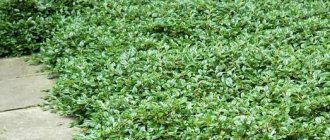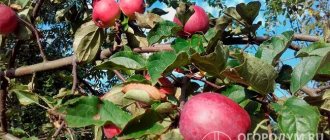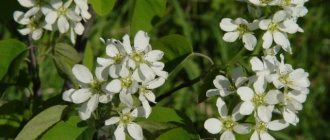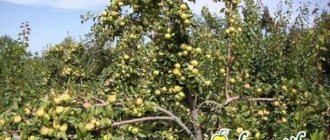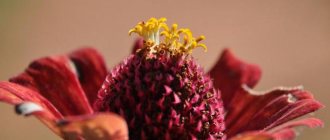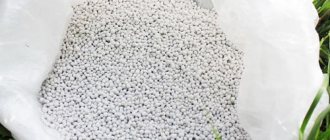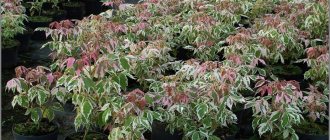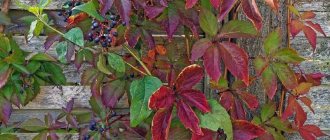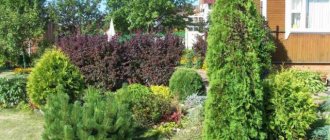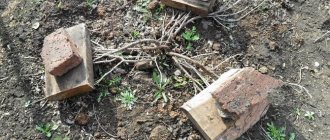In autumn, a lot of fallen leaves accumulate in the garden. But do not rush to burn them, of course, if they are not infected with dangerous diseases (coccomycosis, scab, powdery mildew). After all, healthy dry leaves can be very useful.
Some gardeners are of the opinion that everything in nature is thought out intelligently, so it is better to leave fallen leaves in the garden. This organic matter will serve as food for worms and improve soil structure. But if leaves fall on the lawn or flower bed, they need to be raked so that they do not block the plants' access to light and air. There is no point in destroying the collected natural material; it will still be useful to you.
Material for warm beds
To get a harvest as early as possible in the spring, place the fallen leaves to the edges in pre-prepared trenches, and leave the dug soil near future warm beds until spring. Place shredded grass and other green debris on the foliage and water the trenches (if it's a rainy fall, natural moisture will suffice). In the spring, pour soil onto the fallen leaves, then cover the beds with non-woven material. When they “warm up”, plant seedlings there.
To make a warm bed, you need to dig a trench or make sides
Where can you use foliage at your dacha in the fall?
Here are the main ways to use fallen leaves in the country:
- mulching;
- making humus;
- mushroom cultivation;
- insulation of ceilings;
- production of various fuels.
Mulching
This agrotechnical measure is used to protect plant roots from hypothermia during frosts, as well as improve the structure of the soil. A layer of foliage poured onto beds or an area with any plantings forms an air gap, which performs protective functions.
Since the foliage does not have time to rot before the onset of frost or snow, the mulch to some extent performs protective functions, although it is less effective than a mulch layer made from most other materials, for example, sawdust or shavings.
After the snow melts, various microorganisms begin to rapidly multiply in the soggy foliage, which transform it into humus (humus), that is, the main component of the soil containing the nutrients necessary for plant growth.
Microorganisms that convert organic matter into humus actively consume nitrogen, pulling it from the air and soil, therefore, without the application of nitrogen-containing fertilizers, such mulching sharply reduces soil fertility. But this is typical for any cellulose-containing materials used for mulching in gardens or vegetable gardens.
Mulch from fallen leaves slightly acidifies (changes the acid-base balance) the soil, so or other alkalizing components along with it
But this is typical for all types of natural mulch, because acid is produced by microorganisms that process organic matter and convert it into humus.
Even crushed leaves, after rotting, form fairly large particles that loosen the soil, improving its ability to absorb and pass water.
In addition, parts of the foliage that microorganisms could not convert into humus due to their large size become food for earthworms, which loosen the soil and also produce substances necessary for plant growth. We talked in more detail about all these issues, as well as about the correct use of fallen leaves for mulching here.
Making humus
Mulching with leaves acidifies the soil and deprives it of nitrogen; in addition, this procedure cannot be carried out where there are perennial flowers and some types of shrubs. Indeed, during the life of microorganisms, acids are released that damage the thin skin of the trunk. Therefore, leaf litter is often first turned into humus and only then added to the soil .
To transform fallen leaf mass into humus, the initial mass is mixed with:
- manure;
- ash, lime or dolomite flour;
- preparations containing strains of the desired microorganisms, as well as accelerating their reproduction;
- mown grass;
- kitchen waste.
Then the mixed mass is placed in a compost pit. Instead of a pit, compost can be loaded into :
- a pile in a plant-free corner of the garden;
- special box;
- bags.
Each method has both advantages and disadvantages :
a heap is the easiest to make, but it poisons the soil and also spoils the appearance of the site, in addition, the wind often tears off decomposing leaves from it, which are then scattered throughout the surrounding area;
- the box is convenient for loading, unloading and maintaining compost, but due to its rather large size it is quite difficult to find a place for it;
- The bags are easy to load, store and unload, but they are almost impossible to stir up the contents.
Then the ripening compost is periodically turned and, after ripening, used as fertilizer or mulch.
Such humus, after mixing with soil, forms a soil mixture that can be used for :
- seed germination;
- growing seedlings;
- breeding indoor flowers.
More detailed information on all issues related to obtaining humus from fallen leaves can be found at this link Compost.
Despite the fact that mulching and obtaining humus are the most popular methods of recycling leaf litter, allowing you to get at least some benefit from the process, there are other ways. They are not very common in Russia, especially where the budget pays for leaf disposal, but in private homes or abroad these methods are in demand. We'll talk about them below.
Growing mushrooms
Growing mushrooms at home is gaining popularity, because mushrooms are a very valuable and healthy product that can partially replace meat.
The advantage of mushrooms is that they are able to feed on any plant waste , so fallen leaves are often used to grow them.
To get 1 kg of mushrooms, 3–5 leaf masses are needed, and the mushrooms do not require any special care. For faster and more abundant growth of fungi, the leaf mass is mixed with animal excrement and ash.
Ceiling insulation
The uneven shape of the leaves and the increase in thickness in the area of the veins allows this material to be used for ceiling insulation. After all, between properly laid leaves an air cushion appears, which acts as a heat insulator.
With proper installation and high-quality vapor barrier, the service life of such insulation is several decades . After all, active decomposition processes begin only in conditions of high humidity, so high-quality vapor barrier and removal of excess moisture completely suppress the activity of microorganisms that decompose dead foliage.
Fuel production
The main component of fallen leaves is hydrocarbons, so they can be used to make fuel.
Most often, such fuel comes in the form of :
- briquettes (including eurowood) and pellets;
- pyrolysis gas;
- biogas;
- alcohol
Briquettes and other types of solid fuel are produced by pressing.
However, foliage without an adhesive element is not suitable for this application, so various additives are added to it.
Moreover, the price of the finished fuel often depends on the cost of these additives.
One of the English companies uses wax as a binding element, this increases the calorific value and increases the burning time, but the cost of a standard log of Eurowood exceeds 300 rubles. A more popular additive is shredded wood, which releases lignin when compressed. Wallpaper glue, manure and other substances are also used.
Pyrolysis gas is slightly inferior in calorific value to most natural combustible gases, but obtaining it from fuel that is lying under your feet completely eliminates this difference. To obtain it, you need a smoke generator - that is, a device that burns leaves in a severe lack of oxygen. The amount of air entering the firebox is just enough to keep the leaves smoldering, so most of the carbon comes out in the form of carbon monoxide, which burns well in air.
Biogas is produced by rotting deciduous wood in water without access to air. The same process occurs in a swamp, so biogas and swamp gas are completely identical. However, the process of rotting one leaf is too slow and not very effective, so animal excrement and various crushed kitchen waste are added to the leaf litter, which accelerate the reproduction of microorganisms that feed on organic matter. After decay, organic matter turns into biogas and sludge, which can serve as a good fertilizer.
To obtain alcohol, leaf litter is subjected to hydrolysis, that is, the breakdown of polysaccharides (cellulose) into monosaccharides (glucose), into which yeast is then placed and fermented to produce alcohols.
After distillation, the strength of alcohols and other substances (various oils) rises to a level suitable for use as fuel.
More information at:
- growing mushrooms;
- ceiling insulation;
- fuel production,
you will find in the article Recycling foliage.
How to deal with falling apple tree leaves
- Treatment with insecticides against aphids and apple moths. The number of insects increases in dry, warm weather. Be sure to carry out preventive treatment of apple trees when the leaves first appear, after flowering and after harvesting. During flowering and 1.5 months before harvest, treatments are prohibited. Do not use the same drug twice in a row, alternate them and use folk remedies.
- You can spray with infusion of tobacco, ash, ammonia, this does not give a 100% guarantee, but it repels pests. To prevent ants from spreading aphids throughout the tree, set traps on the apple tree and destroy the ants themselves.
- Apple moth does not like the smell of tomato tops, so you can spray with infusion of the tops and plant tomatoes in the tree trunks of young apple trees.
- Aphids do not like garlic, spicy and fragrant herbs (parsley, cilantro, basil), so you can plant these plants for prevention purposes.
- To prevent apple trees from freezing, make sure that in winter there is enough snow in the diameter of the tree crown. Place snow under the apple tree. If there is not enough snow, cover the apple tree with mown grass in a layer of at least 7 cm.
- Do not plant apple trees in swampy areas, where groundwater is close. If the roots become wet, regularly loosen the soil and mulch with peat, sawdust, and sand.
- To prevent the apple tree from experiencing nutrient deficiencies and suffering from drought, regularly fertilize it with fertilizers. During the growing season, the apple tree needs at least 3 waterings and 3 feedings. It is better to apply fertilizers during watering.
Apple trees that have fallen leaves winter worse and are less resistant to disease. Therefore, if the apple tree’s leaves begin to fall off, it is necessary to take measures as soon as possible to eliminate the cause of the leaf fall.
Don't wait for the apple tree to lose all its leaves. Perhaps the apple tree simply needs watering or is suffering from an infestation of aphids or apple moths.
How to make money by recycling leaf litter?
Most of the leaf litter uses described in this article work well for commercial applications .
After all, utility companies are forced to pay a lot of money for receiving fallen leaves at solid waste storage sites, so they will give away all the collected material for free or for a nominal fee.
The humus can then be sold to summer residents who do not have the opportunity to constantly be in the country and independently make humus from leaf litter.
Briquetted solid fuel, although it cannot compete with ordinary firewood, is suitable for those who care about preserving nature, because sitting at the fireplace they can tell their friends that they burn it with fallen leaves.
Biofuel (methane) can be used to fuel electric generators, which will save on gasoline, which means it is also a kind of profit.
Mushrooms grown on leaves can be positioned as organic products (especially since they are), so their selling price will be much higher than conventional ones. Even when selling mushrooms in regular stores without focusing on organic origin, they will bring good profits, because the material for growing them is free and their care is minimal.
You won’t be able to make money selling alcohol from the leaves , because excise taxes are very high in this area, but you can use it to refuel your cars. Due to its high octane number (100–105), this fuel is suitable for all modern gasoline cars designed to use fuel with an octane number of 95–98.
Warming plants
Many plants need insulating structures for the winter. Figs, standard roses, peaches, etc. in the middle zone may not survive the winter without insulation. First, a frame is constructed, inside which dry fallen leaves are placed. This method does an excellent job of thermal insulation and protects the plant from extreme frosts and winds. In spring, the inner layer must be removed before the weather warms up, otherwise the bark may begin to rot inside.
Home decoration
Choose the most beautiful leaves of original shape and color and use them to create decorative compositions (for example, autumn wreaths and bouquets) that will fit perfectly into the interior of your home. You can also use bright leaves when working together with children to create interesting crafts.
Unique handmade decor will create a cozy atmosphere in your home
What do you do with fallen leaves on your site?
How to treat pests
If apple tree leaves are significantly damaged by aphids or other pests, it is necessary to use chemicals. To prevent the appearance of parasites, trees are sprayed with nitrophen in early spring at the rate of 200 grams of this substance per bucket of water. Before the buds open, the plant can be sprayed with a 4% concentration of Opeocuprit solution.
The biological preparation Kinmiks will help get rid of pests during the flowering period. This product is used to combat leaf-eating insects. The working solution is prepared according to the attached instructions. The following will help you get rid of aphids from a tree:
- Intavir;
- Cypermethyrin;
- Spark;
- Decis;
- Karate.
Advice! Use chemicals only in extreme cases when traditional methods of control do not give the desired effect.
When are fallen leaves dangerous?
Fallen leaves are a valuable fertilizer, but they are not always beneficial. In some cases, leaf litter can be dangerous.
For conifers
In autumn, many coniferous plants suffer from the fact that their crowns become clogged with fallen leaves. These include:
- low-growing junipers;
- spherical thujas;
- cushion spruce.
Therefore, when the leaf fall ends, it is necessary to thoroughly clean the crown of coniferous plants from leaves stuck in it. Otherwise, they will begin to rot, and this in turn will lead to the development of various fungal diseases in the tree.
On the lawn
It is recommended to remove fallen leaves from the lawn at least once a week, especially in wet weather. Otherwise, the lawn will quickly begin to turn yellow and become moldy. To remove leaves from your lawn, you will need a rake or garden vacuum.
Compost
The leaves can serve as excellent raw materials for exceptional organic fertilizer. The cost of buying organic matter to replenish the entire site can be a big expense when the leaves that fall each year are completely free.
To do this, you need to build a compost fence or pit where you put all the foliage collected from the site. In a few years it will be full-fledged “black gold” for the owner. The process can be accelerated by adding bacterial preparations to the compost.
Related article:
Weeding is fun: 5 devices to make work easier that any gardener will love
